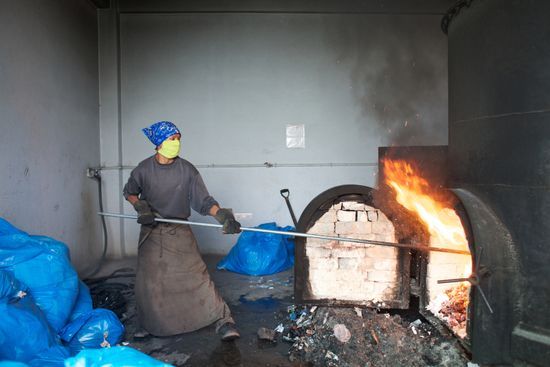
According to WHO, about 85% of the total amount of waste generated by health care activities is general, non-hazardous waste. The remaining 15% is considered hazardous material that could be infectious, toxic or radioactive. Hazardous waste that is not managed properly presents a risk to hospital patients, health care personnel and the general public.
Please note: These materials were last updated on 08/08/2022.
Photo credits: WHO / T. Pietrasik
Language: English
COVID-19
Course information
This course is also available in the following languages:
Tetun - Nederlands - Русский - македонски - ქართული ენა
Overview: In this course, you will learn about the different categories of waste and the process for waste management. Health care waste includes all waste generated by health, research and laboratory facilities in the course of providing health care services. Health care waste in a facility should be managed from point of generation to final disposal and removal.
Learning objectives: By the end of this course, you should be able to:
- identify the categories and sources of waste at a health care facility;
- describe the best practices for minimizing, segregating, collecting, transporting and storing health care waste; and
- identify the recommended treatment and final disposal methods for health care waste.
Course duration: Approximately 1 hour.
Certificates: A Record of Achievement will be issued to participants who receive at least 70% on the post-test. You have an unlimited number of attempts to meet the threshold. Participants who receive a Record of Achievement can also download an Open Badge for this course. Click here to learn how.
Enroll me for this course
Certificate Requirements
- Gain a Record of Achievement by earning at least 70% of the maximum number of points from all graded assignments.
- Gain an Open Badge by completing the course.